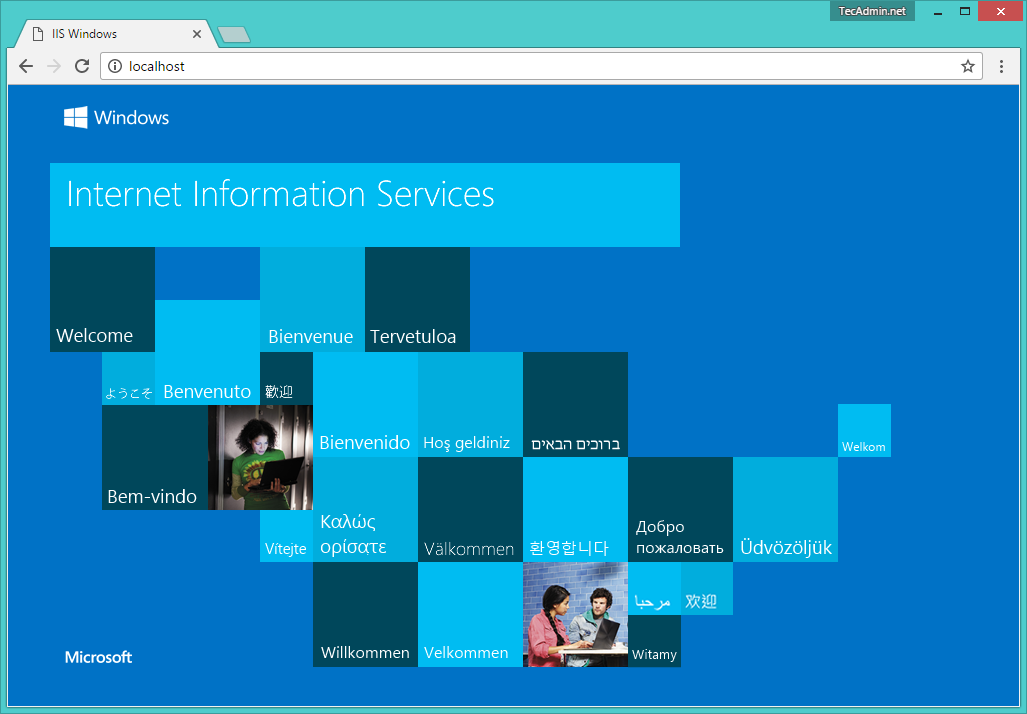Windows 8 Iis Manager
How do I open IIS Manager in Windows 10? For some reason, I can't find it at all. I checked in Administrative Tools but it's not there. I found a copy of it but that didn't work. Can someone help me? Asked: September 8, 2016 5:17 PM. Related Questions. Problem with Microsoft ISA 2006 - blocking websites by default. Install IIS 10 on Windows 10. The first thing we’ll need to do is install IIS via the Control Panel. Once you are there, click on Programs and Features. Next click on Turn Windows features on and off in the left-hand column. Now scroll down until you see Internet Information Services in the list. Go ahead and click in the empty checkbox next to the title. I’ve got IIS installed and enabled on Windows 7, but I don’t know where to open it so that I can configure a website. I seem to remember that in Windows XP it was somewhere in the Control Panel, but I can’t find it in Windows 7.
One of the first things Web Developers using ASP.NET will want to install on Windows 8 is IIS (Internet Information Services). Windows 8 and Windows 10 ships with a new version of IIS, version 8, lets take a look at installing it.
Note: Windows 10 installs IIS version 10 instead of version 8, for obvious reasons. It’s the same exact process either way.
Installing IIS
Keeping with Microsoft modular design of, uhm, everything these days, IIS in Windows is still an optional “Windows Feature”. To install it, press the Windows + R key combination to bring up a run box, then type appwiz.cpl and press enter.

This will open the Program and Features part of Control Panel, on the left hand side click on the “Turn Windows features on or off” link.
Now click on the Internet Information Services check box.
If you’re a developer you are going to want to expand it and explore the sub-components as well. By default it installs all the stuff needed to host a website, and you are probably going to need some of the more developer centric components as well.
After clicking OK, this dialog will appear on your screen for a while.
When its done, fire up your browser and navigate to localhost.
That’s all there is to it.
READ NEXT- › How to Set Up a Smart Kitchen
- › How to Speed Up Your PlayStation 4’s Downloads
- › How to Disable the Login Screen’s Background Blur on Windows 10
- › How to Use All Linux’s Search Commands
- › How to See All Your Saved Wi-Fi Passwords on Windows 10
by Robert McMurray
Compatibility
| Version | Notes |
|---|---|
| IIS 8.0 | IIS 8.0 is only available in Windows Server 2012 and Windows 8. |
| IIS 7.5 | |
| IIS 7.0 |
Overview
Server Manager in Windows Server 2012 is new and accordingly, the user experience has changed as well.
This step-by-step instruction is not unique to installing IIS. It is meant to assist IIS customers with navigating through the new Server Manager quickly.
Step by Step Instructions
Prerequisites:
- Windows Server 2012 has been installed.
Workarounds for known bugs:
- There are no known bugs for this feature at this time.
Installing IIS 8 with the Default Settings
To install IIS 8, use the following steps: Download snsd into the new world instrumental.
- Open Server Manager.
- Under Manage menu, select Add Roles and Features:
- Select Role-based or Feature-based Installation:
- Select the appropriate server (local is selected by default), as shown below:
- Select Web Server (IIS):
- No additional features are needed for IIS, so click Next:
- Click Next:
- Customize your installation of IIS, or accept the default settings that have already been selected for you, and then click Next:
- Click Install:
- When the IIS installation completes, the wizard reflects the installation status:
- Click Close to exit the wizard.
Summary
Download Manager For Windows 8.1
IIS 8.0 has been installed successfully by using Server Manager in Windows Server 2012.